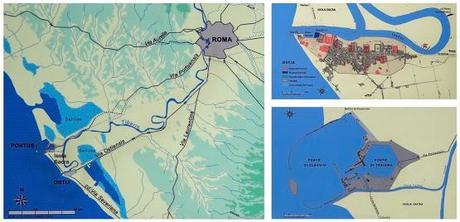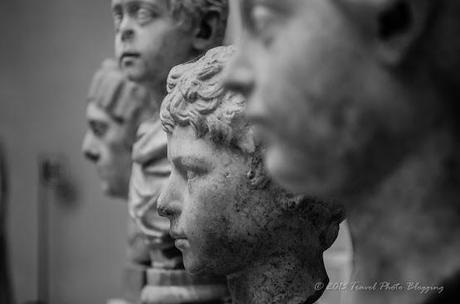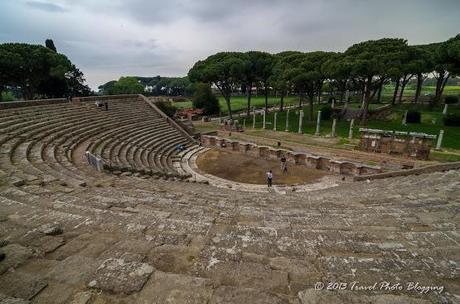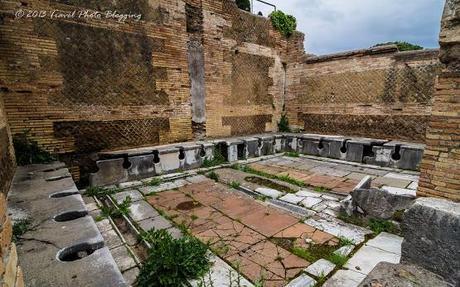If during a visit to Rome you wish to escape the city bustle for a day, a magnificently preserved old city awaits not far away. It is located just next to the today's seaside destination town of Ostia. It is located 30 kilometres south-west from Rome.

It is interesting that a port town is not located by the sea. Ostia once definitely was a seaport, but due to silting and a changed course of the river Tiber it now lies 3 kilometres away from the sea.
Ostia got its name from its position at the mouth (ostium) of the river Tiber. This was perfect for various trading activities but not so much from the defensive point of view.

The city was founded in 7th century BC but the oldest preserved buildings currently visible are from the 3rd century BC. The downfall of once thriving harbor city started with recurring pirate sackings. After a naval battle between Christian and Saracens in 9th century AD the remaining inhabitants finally had enough of it and moved to a nearby city of Gregoriopolis.

The place is massive - it stretches for well over a kilometer in length! One should definitely keep that in mind while setting the viewing pace. It took us a whole afternoon to more-or-less walk through it. Whenever we ventured into many side streets there was an interesting surprise waiting for us just around the corner.
Among the highlights of this site are many ancient buildings, magnificent frescoes and impressive mosaics - all of them nicely preserved. The sheer size of the place was a definite highlight for me. Apart from that the state of buildings and mosaics is truly amazing.

Apart from beautiful mosaics there are also many buildings one should definitely not miss. These are my personal favourites in no particular order:
- The Amphitheatre of Ostia Antica definitely deserves your attention. It is a perfect spot for a midday snack (on a cloudy day).
- Just next to the theater there is also an ancient market full of beautiful mosaics with representations of various vendors through their goods and trades.
- I loved perfectly preserved public latrines, organized for collective use as a series of marble seats that also served as an important social moment apart from their obvious use. They were connected to a practical sewage system, spread all over the city.
- Multiple public baths with beautiful mosaics and remains of ingenious central heating systems are something not to be missed.
- I also really liked a nicely preserved bar on Via Casa di Diana. The inn called the Insula of the Thermopolium gives you a perfect idea of such a place back in those days. Shelves for food and drinks for sale can still be seen. It is not all that much different from modern bars.

How to get there? You can easily reach Ostia Antica from Rome by train. Take the city Metro (Line B) to the Piramide station. When you get to the station use the stairs/escalators at the north end of the tracks. Once you reach the top, head left until you reach a different set of tracks of the ROMA-LIDO (beach) train. Your metro pass can be used on this train and it will take you directly to the Ostia Antica station. The trains leave about every 15 minutes during peak season. You can buy your return ticket either at the beginning of your trip or use a ticket machine on Ostia train station before your trip back.
Really cheap and easy! Well worth the effort - especially since you can combine a visit to Ostia Antica with some beach time on the nearby Ostia Lido.








